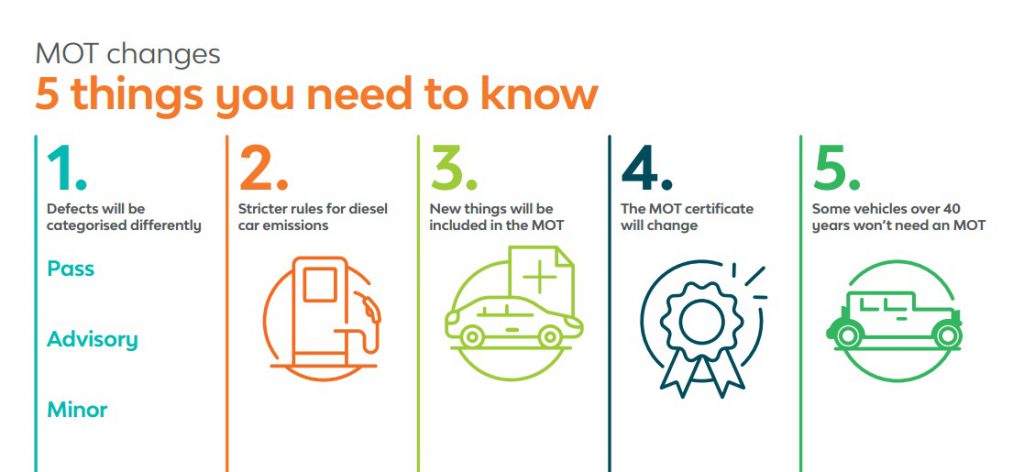The rules governing the annual MOT test are changing on 20th May 2018. These changes are being made in line with the latest EU directive on roadworthiness tests, and are designed to ensure that vehicles are safer and more environmentally-friendly.
New defect categories
The biggest change is a move away from the ‘pass or fail’ nature of the tests. Instead, each item on the car will be put into one of five categories: pass, advisory, minor, major and dangerous.
A vehicle with only minor defects will not fail, although the owner should get those defects rectified as soon as possible. This means that certain defects that result in failure at the moment – such as low brake fluid levels – won’t do so after 20th May.
However, even one major or dangerous defect will result in the vehicle failing its MOT.
New items included
In addition, some new checks are being added to the MOT test. These include checking whether the tyres are obviously underinflated and whether any brake pads or discs are missing.
Vehicles first used on or after 1st September 2009 will also now have their reversing lights and headlight washers tested.
Environmental tests
As part of the Government’s efforts to tackle air pollution, diesel cars fitted with particulate filters will face tougher rules. They will have to meet stricter emissions limits, and will fail their MOT if there is any smoke coming from the exhaust or if the filter has been tampered with.
In addition, inspectors will now have to check vehicles for any fluid leaks that might pose a risk to the environment.
New MOT certificates
The MOT certificate has been redesigned to reflect these changes. It will now list clearly any minor defects and advisory items, so that owners know what they need to get fixed.
Exemption for older vehicles
Currently, vehicles built before 1960 don’t have to undergo MOT tests. The Government is extending that exemption to any cars, vans and motorcycles that are more than 40 years old, as long as they have not been substantially modified.
All other vehicles must undergo their first MOT test three years after being registered, and then further tests each year after that.
To help you keep up-to-date, we’ve produced a handy infographic summarising the changes:
MOT changes: 5 things you need to know




